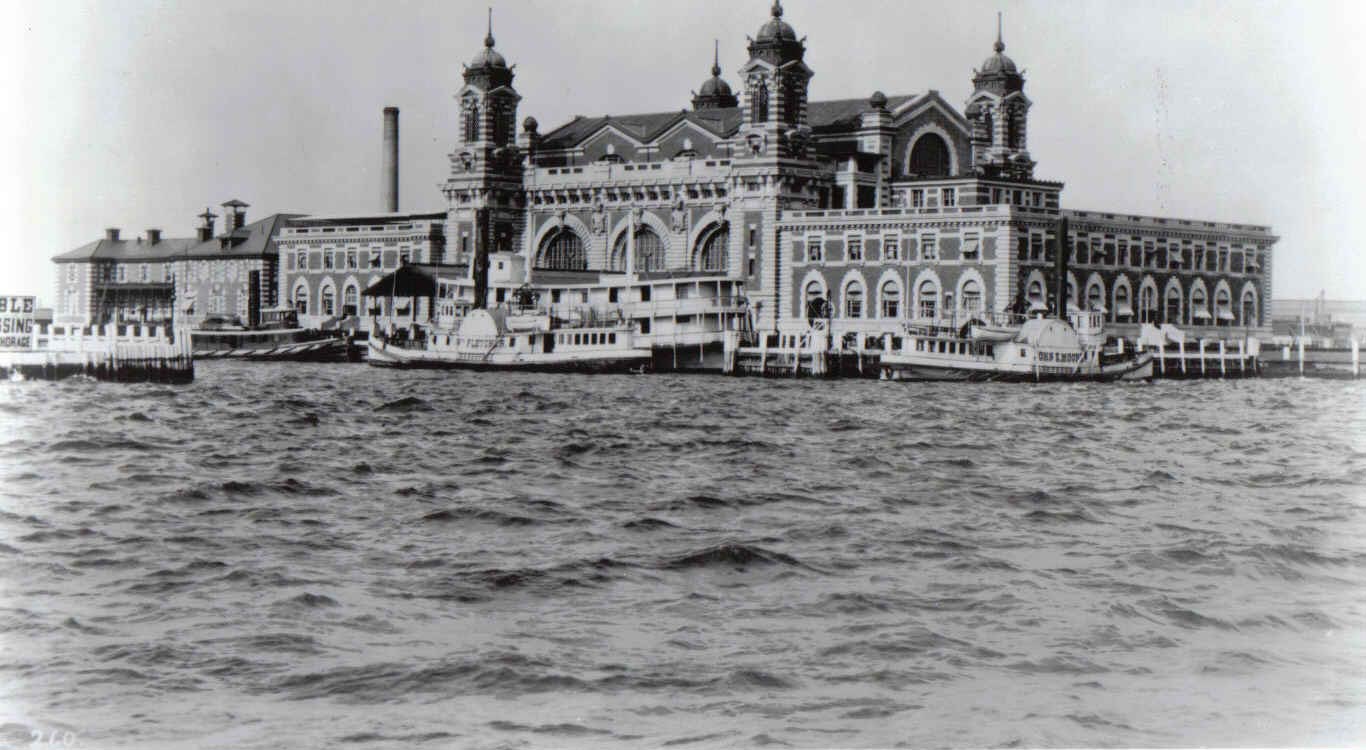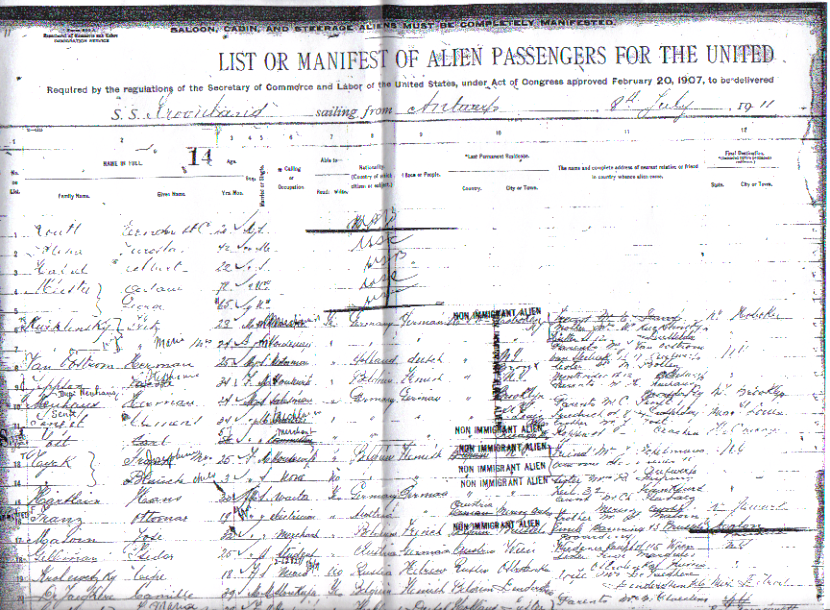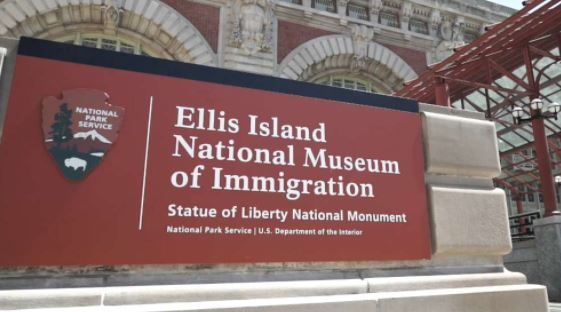Ellis Island Museum of Immigration
History, as I have
learned this semester, is a constantly changing concept and is constantly being
written through different objectives for different agendas. History is told
through the eye of the one beholding the pen when history is written. It’s from
that perspective that we receive our education or our views on how the past
happened, and how it’s still affecting us today.
Since childhood, I’ve known
the importance of public spaces, and how they present history to us. I remember
school field trips and visiting places like Waterloo Village and learning about
the Lenape Indians. I remember going on family vacations to forts and
historical towns where people would dress up as if they were still living in
the past. I remember blacksmith shops, historical reenactments, and the magic
of discovering a world that existed before more than three-quarters of the
people that I knew in my life.
One public space that has always had the biggest impact on me, will always
be Ellis Island. I was in middle school when I walked through those doors for
the first time. My dad was right by my side playing chaperone on one of my
school field trips. I remember the large space we first entered. Not only was
my class there, but there were more people than I could ever possibly count. I
remember feeling overwhelmed. I didn’t understand it at the time, but this was
probably exactly how the people journeying to America must have felt. They must
have felt overwhelmed by the presence of so many other people attempting to
live the same dream as they were, and yet, they must have been full of so much
fear that they wouldn’t make it through to the other side, while also excited
to start a new life in a country that promised opportunity and freedom. I could
compare it to my first day of college orientation, looking around the room and
wondering who was going to make it and who was going to fold under the pressure
of deadlines and stress. I wondered if I, myself would survive.
Ellis Island became the official immigration building for Europeans looking to escape religious persecutions, an economic roller coaster, and an unstable government fled to the United States in the late 1800’s to live in peace and freedom in a country that promised opportunity and growth. Of course, Ellis Island was only built after a few hiccups at Castle Garden, near Battery Park in Manhattan, which deemed them unfit to accept immigrants and allow them to live freely in the United States. It was on January 1, 1892 that Ellis Island officially signed in their first immigrants. After that, Ellis Island’s halls held over 12 million immigrants.
People from all over the
world passed through Ellis Island, including relatives from both sides of my
family. Millions of people flooded through those doors after having taken long
journeys on ships only to be inspected upon arrival. Not only were they searched
from head to toe and had doctors examine them for any sign of illness or
disease that they may spread into the United States so that it could be
contained within the facility, but they were also cross examined with about 30
questions. Unfortunately, a fire in June of 1897 disrupted this process and
burnt Ellis Island entirely to the ground. Luckily, no lives were lost during
this fire, but the records of many were, records dating back to as early as
1855.
Ellis Island was rebuilt
and recovered, which is a relief for me because my family didn’t come over until
the 1900’s from both Italy and the Philippines. I did try to find their records
on the Ellis Island’s family search but was unsuccessful. There were just way
too many D’Orio’s to search through, and my mother’s paternal grandfather was
inaccurately recorded because of the misspelling of his last name, which made it
difficult to know if the records I found were his since the dates didn’t match
up. Despite all of this, by the 1900’s immigration laws had begun to become
stricter. A mere 30 or so questions was no longer enough. Immigrants now needed
to go through the usual 3-5 hour documentation and examination processes, as
well as a literary test, the Alien Contract Labor law, National Origins Act Law,
the Chinese Exclusion Act, and quota laws.
By the 1920’s Ellis
Island was slowly replaced with a new form of immigration screening. Embassies
were formed after World War I and inspections took place at these embassies.
Ellis Island became the designated spot to send people like war refugees or
those having trouble with their documentation, but by the end of 1954, Ellis
Island was officially closed for the purposes in which it had been built for.
Ellis Island was
officially re-opened to the public in 1976, after about two decades of having
been abandoned as a historical island owned by the government. Whether it’s
hallowed halls whispered sounds of hope or despair was up to each individual
soul that had rested their heads their before we were able to step foot inside
of it’s halls once again after it had been restored as a museum. Since it’s
opening in 1976, the public has been able to step foot inside of the grand hall
and wander around, search through endless baggage in the baggage room that
belongs to you, and sleep off any ailments you had before continuing onward on
your journey to the land of the free in the dormitories.
Not only do I think that
Ellis Island displays the past in a tactful and respectful way with a
beautifully reconstructed building, but they draw their audience in with images
of people they may know, stories from the perspectives of those people, and
artifacts from the past. They offer tours to give you the historical aspect of
this building and the important role it played in American Immigration history,
and how the laws involving those in allowed into the United States became so
strict. It pulls at your heart strings by giving you visuals of how these
people were treated, the conditions they were kept in, and pushes the extra
mile by giving you some of their stories and gives you a perspective of how
they felt. It is especially relevant with today because we all, at this point,
know what it is like to be confined to a space in fear of spreading illness.
Empathy is a huge idea of why this museum works and why so many people relate
to it. We have empathy because at least half of the United States can trace a
relative back to Ellis Island. Ellis Island was the beginning of at least half
of the families in the United States today. We can empathize with their
struggles because we can see the depictions of the past and we’ve heard the
stories. With audio, visual, and kinesthetic aspects to this museum, as well as
the interesting history it holds even before and after it was used as an
immigration station, I believe this is an amazing way to display and present
history to the public.
This museum even allows you to search through records online for your family’s records, even telling you what the name of the ship they came over on was! I believe what makes this museum so accessible and popular among the public is its ability to give the story of the past to us through an unbiased eye. We are able to explore the past for what it was instead of there being a hero and a villain. There is no good and evil in this story. There’s just a story. It allows us to view and connect to the past on personal levels without feeling guilty or overwhelmed about any biased factors. We are able to view and learn this history’s legend in our country for the simplicity of the difficult time that it was. We are able to connect to the feeling of hope and despair. We are able to walk through and experience what these people experienced, in a sense.
On the Ellis Island
website, you can not only search your family’s records, you can view and share
their stories! There are hundreds of accounts between immigrants and their
families and what it was like for them to journey to America and through Ellis
Island. You are also able to leave your family’s legacy on their wall of honor
if it’s not already there. They use the fee they charge you to do this toward
their restoration funds of both Ellis Island and the Statue of Liberty. It's a
great way to honor those that helped build our country to what it is today,
while collecting money to restore and keep that honor alive.
The Ellis Island site
also gives a detailed history about Ellis Island as an inspection station as
well as gives visitors an idea of what their mission is and what their plans
for Ellis Island and the Statue of Liberty are for the future. The Statue of
Liberty-Ellis Island Foundation, and their partner, the National Park Service,
strive to bring more cultural resources and honor our national heritage.
Whether you are looking
to expand your knowledge of your family’s past, mourn a loved one, donate to
the Foundation to further expand their resources or just learn about the past of
America’s immigration, Ellis Island prides itself on giving you the resources
and connections to the past you need, or want.
Sources Used:
“Ellis Island.” Statue of Liberty & Ellis Island, 1 Nov. 2022, https://www.statueofliberty.org/ellis-island/.
History.com Editors. “Ellis Island.” History.com, A&E Television Networks, 27 Oct. 2009, https://www.history.com/topics/immigration/ellis-island.








Comments
Post a Comment